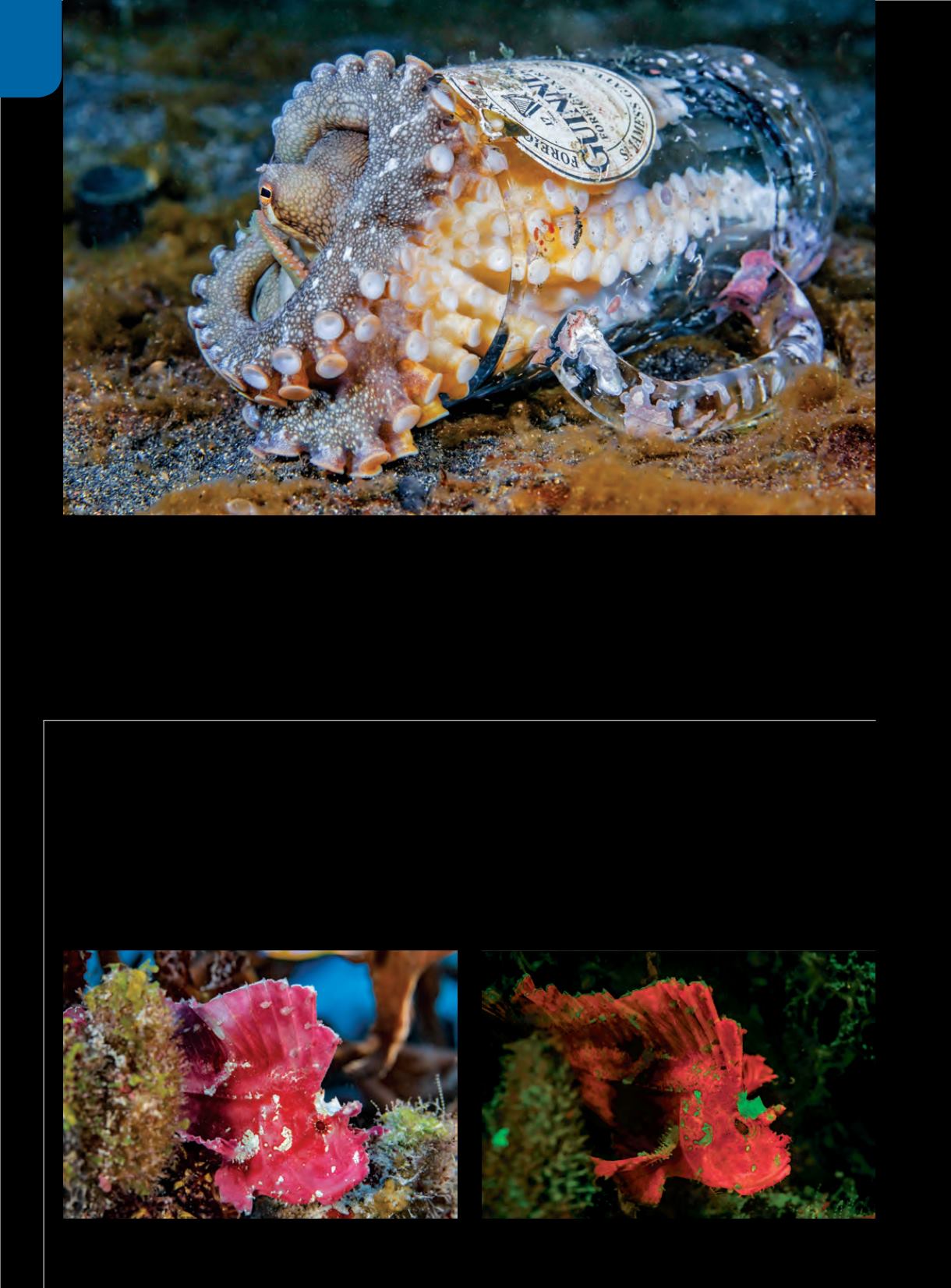

IMAGING
SHOOTER
96
|
FALL 2016
C O C O N U T O C T O P U S I N A G U I N N E S S G L A S S
“Every night dive delivers the unexpected, sometimes in weird or funny ways. In Lembeh Strait, Indonesia, we came across a
coconut octopus dragging its mobile home — a discarded Guinness glass — across the nondescript muck of one of the dive
sites. When caught in the dive torch’s beam, the octopus retreated into the relative safety of the transparent glass, perhaps
overlooking the fact that it was hiding in plain sight. Working for a UK dive magazine and having attended staff debriefings
in a pub or two, I thought it seemed appropriate, perhaps even destined, for
DIVE’
s readership.”
L E A F S C O R P I O N F I S H B Y D A Y A N D N I G H T
“At one island we visited in Cenderawasih Bay, Indonesia, there was an abundance of leaf scorpionfish (
Taenianotus triacanthus
), cryptic
yet fascinating ambush predators that are often found in pairs or trios. They remain resident at specific coral formations for months or
years and can be found in various colorations (for reasons unknown) ranging from pale white to gold to magenta to dark brown. I made
the image of a striking magenta specimen on a morning dive and returned to the same reef for our night dive. Instead of using a typical
dive light during the night dive, I used Nightsea fluorescence excitation lights and a filter to capture the bioluminescence given off by
many coral species as they feed at night. As I shined the blue light of my Nightsea torch into the darkness, the dazzling glow of the same
leaf scorpionfish stood out in the darkness from 15 feet away. The orange glow comes from a bioluminescent bacteria associated with
the scorpionfish’s skin. A companion leaf scorpionfish, which was brown during the day, gave off no bioluminescent glow by night. The
bioluminescent glow is believed to be visible to other fish, but the purpose it serves in unknown.”
















